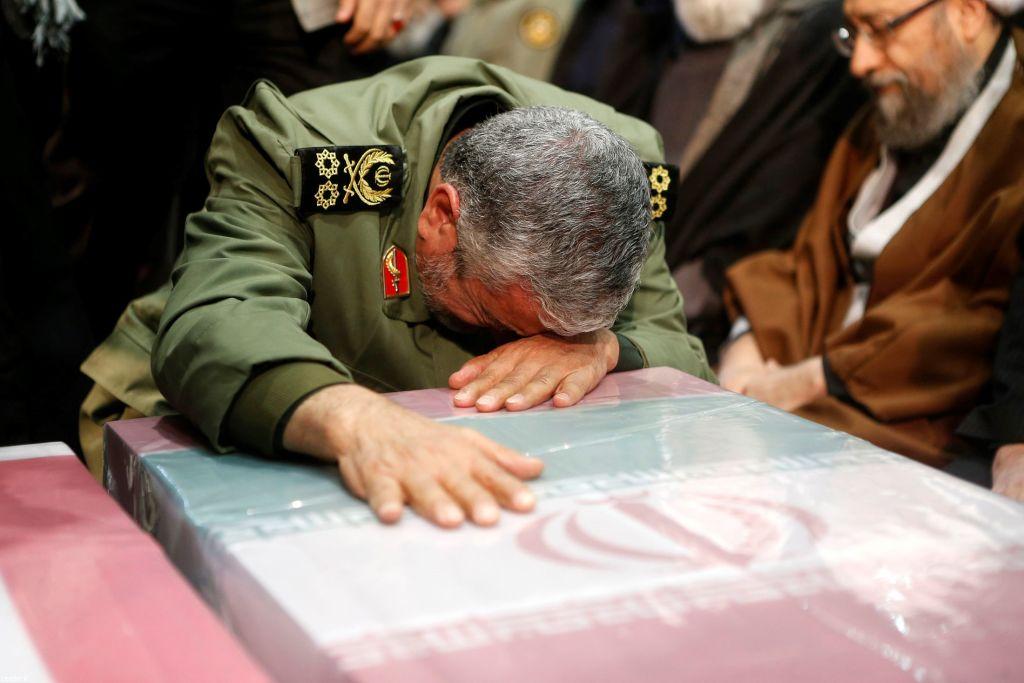
When it comes to American policy in the Middle East, the only certainty is complete uncertainty. What conclusions can we draw from the past 24 hours in the decades-long Iran–US crisis?
First, Iran was the mouse that didn’t roar. After mobilising millions in the streets to damn America following the killing of the Islamic Revolutionary Guard Corps commander, Qassem Soleimani, Tehran launched a deliberately ineffectual retaliation—a ‘fake’ strike.
Last September the Iranians mounted a devastatingly effective missile attack on Saudi oil facilities. Multiple targets were accurately hit. They know how to use these weapons. The fact that around 20 missiles were fired at US bases in Iraq without any American casualties shows that the operation was about delivering theatre rather than high explosive. This is a blow to the standing of the IRGC and the Iranian regime.
Second, America was the eagle that didn’t land. After threatening devastating attacks on 52 locations—Iran ‘WILL BE HIT VERY FAST AND VERY HARD’, Donald Trump tweeted—the president was content to do nothing because no US lives were lost. For all his blustering, Trump is the most risk-averse commander-in-chief since Jimmy Carter.
It’s a good thing that the White House is reluctant to use military force, but the emerging Trump doctrine—that America will retaliate only if its troops are attacked—is a strategy of immobility. Iran knows that it can do what it wants in Syria, Lebanon and Iraq so long as the red line on US casualties isn’t crossed.
That leads to a third conclusion: there’s no US strategy for Iran, Syria, Iraq or the wider Middle East beyond the president’s instinct to disengage and his impulsive reactions to daily events. A phone call with Turkey’s President Recep Tayyip Erdogan prompts Trump to abandon years of American support for Syria’s Kurds; an annoying tweet from Iran’s Supreme Leader Ayatollah Ali Khamenei pushes Trump spontaneously to authorise a missile strike on Soleimani.
Sometimes these gut reactions produce positive outcomes; on other occasions the results are catastrophic. Always they leave allies—and, one suspects, the US military and intelligence agencies—wondering what on earth is going on.
Conclusion number four is that the president is shaping policy almost completely in isolation. If there is any attempt on the part of his senior cabinet and military commanders to shape his thinking it was not evident in the president’s statement to the American people after the Iranian strike.
In less than 10 minutes, and with his stony-faced commanders around him, Trump said he would impose tougher sanctions against Iran, lobbied for more NATO involvement in the region, threatened dire military retaliation, claimed the Obama administration had funded the Iranian missiles used in the strike, and called for working together with Iran towards a ‘new deal’ on nuclear weapons. How any of this resolves itself into actionable policy is unknown territory.
For Australia the best approach is business as usual for our military commitments in the region. Our forces will remain on high alert, but it would be damaging to bring them home too quickly. That said, we need to be mindful that Iraqi politics might well force our Taji training team home soon. That would be no bad thing, as the original purpose of the mission—training Iraqis to fight the so-called Islamic State terror group—has been overtaken by more recent chaotic events.
Finally, it’s best to think of the current outcome as a pause rather than a conclusion to US–Iranian hostilities. The region is still on a hair-trigger. The IRGC is unlikely to accept that Tehran’s ‘fake’ strike closes the account on Soleimani’s killing. He spent decades building up proxy forces through the region that would be only too pleased to cross Trump’s red line on US casualties. The risk of conflict remains high in this odd standoff where neither side wants to fight or to back down.